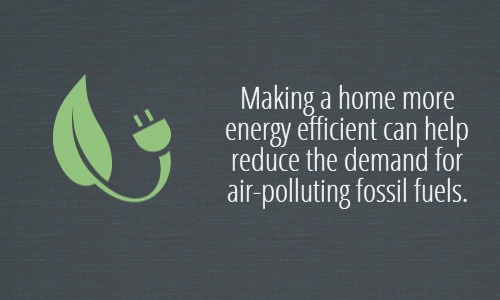This is the fourth installment in a seven-part Eco Tips Series. Go here to read previous installments.
According to Pittsburgh Today’s Regional Environment Survey, nearly 79 percent of regional residents believe there is little or nothing they can do to solve environmental problems. In light of this finding, Pittsburgh Today is producing this Eco Tips series, intended to show steps citizens can take to improve the environment. In today’s fourth installment, we focus on home energy audits.
Making a home more energy efficient can save homeowners five to 30 percent off their energy bills. And by using less energy, they help reduce the demand for air-polluting fossil fuels.
Homeowners need to know how much energy their homes use and what steps they can take to make it more energy efficient. A home energy audit or a home energy assessment is the first step.
The recommended method is to hire a professional energy auditor or service. They evaluate your energy use by analyzing utility bills and inspecting your home with special equipment to detect sources of energy loss. They also check for health and safety concerns, such as faulty wiring or furnace leaks.
Common recommendations for improving a house’s energy efficiency include:
- Sealing air leaks and adding ventilation.
- Replacing windows.
- Upgrading lighting, appliances and water heating equipment.
- Sealing ductwork.
- Improving or upgrading heating or cooling systems.
Home energy audits range from $300-$500, but are sometimes subsidized by local government or utility companies.
If a professional energy audit is out of the question, a self energy audit is the next best thing.
- Check indoors and outside for air leaks along baseboards, at the junctures of walls and ceilings, and around windows and doors.
- Check for adequate insulation in the attic and walls.
- Inspect heating and cooling equipment annually and replace dirty, clogged filters.
- Replace light bulbs with efficient ones such as energy-saving incandescents, compact fluorescent lamps (CFLs) or light-emitting diodes (LEDs).
Some online tools are available to help you do your own audit. For example:
- Home Energy Saver, created for the U.S. Department of Energy, calculates your energy use profile.
- Duquesne Light offers customers a free online energy audit and energy efficiency kit including light bulbs and a power strip.
Home energy-saving decisions are limited if you rent. Still, there are some things you can consider. For example, if you provide your own appliances, buy energy efficient models. And adding window treatments or weather-stripping to doors and windows to seal air leaks can make a big difference.
Like this article? Spread the word. Send this to a friend.
This is the fourth installment in a seven-part Eco Tips Series. Go here to read previous installments.





